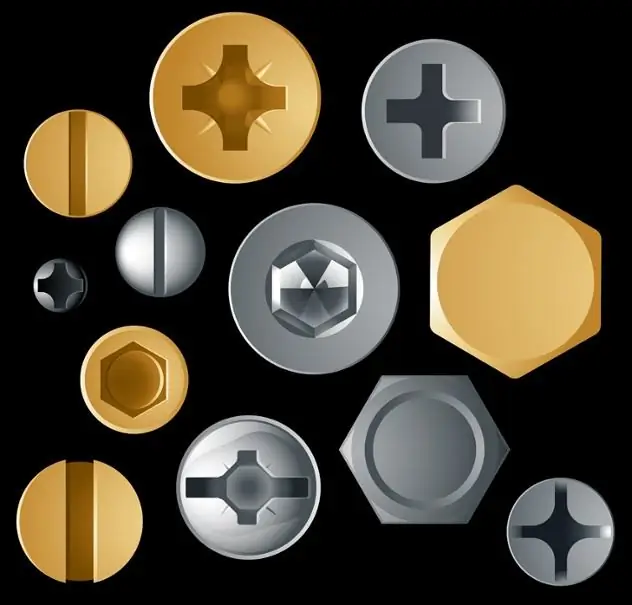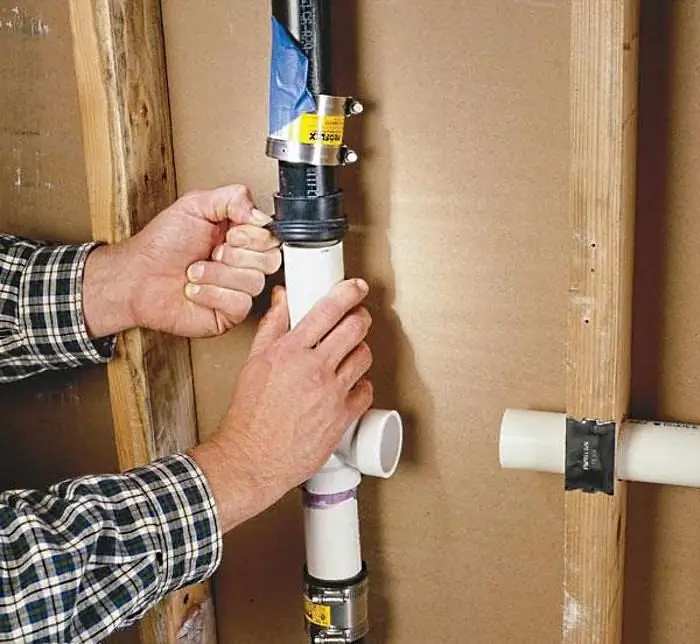2026 Author: Howard Calhoun | [email protected]. Last modified: 2025-01-24 13:10:41

Many people who are interested in issues of armament of the army, have formed for themselves a largely erroneous opinion that the barreled artillery in the existing conditions has become practically unclaimed. And indeed: it would seem, why is it needed when missile weapons reign on the battlefield? Take your time, it's not that simple.
The fact is that cannon artillery is much cheaper to manufacture and operate. In addition, subject to the use of projectiles with optical-laser guidance ("Kitolov-2"), it is capable (at a normal distance, of course) of showing no less impressive results than missiles on the battlefield. We should also not forget about the possibility of using small-sized atomic charges. In a serious war, this can be extremely useful.
Therefore, today we will discuss the Hyacinth self-propelled guns - one of the most impressive systems of this class.
Backstory
During the Second World War, self-propelled artillery pieces proved to be powerful anda dangerous weapon, the presence of which could often decide the outcome of the battle in favor of one or another side of the conflict. Their price was significantly lower than that of tanks, but under certain conditions, cheap and not very well armored vehicles could effectively destroy heavy enemy armored vehicles. For our country, this was especially important at the initial stage of the war, when military equipment was sorely lacking, and its production needed to be simplified and cheaper as much as possible.
Practically all motorized rifle divisions of the USSR in the post-war period were equipped with tanks and self-propelled guns on a mixed basis. Each motorized rifle regiment had high-quality artillery weapons, which were represented by a full SU-76 battery. The share of other artillery weapons, which were created during the war years, has significantly increased.
All self-propelled guns put into service at that time were intended solely to support attacking infantry in battle. However, in the post-war period, military doctrine increasingly prescribed the use of self-propelled guns together with or instead of tanks.
In the 50-60s, the role of self-propelled guns was constantly falling. Often the question arose about the complete cessation of their production and the replacement of this type of weaponry with tanks. So, by the mid-60s, very few new models of self-propelled guns had been developed. Almost all of them were based on old tank chassis from the Second World War, equipped with new armored hulls.

Industry decline
In the late 50s of the last century, Nikita Khrushchev, a passionate fan of rocket weapons,authorized an almost complete h alt in the development of barrel weapons in the USSR. Because of this, we have lagged behind our potential opponents for more than a dozen years. History repeatedly punished the USSR for this miscalculation: already in the 60s it became clear that the value of cannon artillery remained at the same level. This was especially clearly confirmed by the episode in China, after which the Secretary General revised his views on this problem.
Then the Kuomintang deployed a whole battery of long-range American howitzers and began to calmly shell the territory of mainland China. The Chinese and our military advisers found themselves in an extremely uncomfortable position. They had M-46 guns with a caliber of 130 mm, but their shells did not reach the enemy's batteries, even with a fair wind. One of the Soviet advisers suggested an original solution: in order to finish off the target, it was just necessary to warm up the shells properly!
Both sides of the conflict were very surprised, but the reception was successful. It was this case that served as the impetus for the development in 1968 of the self-propelled guns "Hyacinth". Its creation was entrusted to Perm specialists.
Work directions
Since the work needed to be completed as quickly as possible, development went in two directions at once. Specialists worked both in the field of creating self-propelled and towed guns (indexes "C" and "B", respectively). The Main Directorate of Artillery immediately assigned the designations 2A36 and 2A37 to these vehicles. Their important feature was not only unique ballistics, but also special ammunition, which was made specifically for the Hyacinth self-propelled guns. 152 mm -a fairly common caliber, but few people know that the Soviet Army did not have other ammunition of a similar caliber that could be used by these self-propelled guns.
General information
In Perm, an artillery unit was created directly, in Yekaterinburg the chassis was designed, and at the NIMI Institute, the best specialists thought about creating the most suitable ammunition for such a system. Already in 1969, two versions of the new self-propelled guns were proposed for consideration by the commission: in the cutting and tower version. The second option was approved. In 1970, the government initiated full-scale work on the Hyacinth self-propelled guns. Already at the beginning of 1971, the first 152 mm caliber guns were presented to the "public court", but due to the unavailability of shells, firing was postponed.

The Hyacinth C crew consists of five people. On the highway, the car can move at speeds up to 60 km / h, the cruising range is about 500 kilometers. The hull is made of armor plates (aluminum alloys) 30 mm thick by welding. Such armor does not provide any adequate protection for the crew even from heavy machine guns, and therefore, when performing combat missions, it is necessary to think over the location of the vehicle on the ground especially well.
In addition, the disadvantage of the installation "Hyacinth C" is its rather low rate of fire - no more than five shots per minute. It should be noted that the supply of shells is carried out manually, and therefore, during intense combat, the calculation may simply get tired, which is even morereduce the efficiency of such loading. And one more thing - given the characteristics of domestic winters, one should not be surprised at the cool attitude of the military to an open gun that is not covered by a tower. Even in the conditions of the Chechen "cold" period, there were cases of frostbite of the Hyacinth crews.
The only excuse for the developers is the fact that this self-propelled gun was originally planned at the time of the Cold War. Simply put, it was designed specifically for combat operations in Western Europe, where temperatures below 7-8 degrees Celsius are rarely observed in winter. It is worth remembering at least that the BMP-1, designed for the same conditions, did not prove to be the best in Afghanistan (albeit for different reasons).

Power plant and chassis
The engine compartment is located in front of the case. The power plant is represented by a V-shaped V-59 engine, V-shaped with a power of 520 hp. The peculiarity is that it is arranged in one piece with a two-line transmission. The gun commander's compartment is located to the right of the engine. Immediately in front of the commander's cupola is the workplace of the driver. The fighting compartment itself is located in the central part of the hull. The shells are in vertical stacking.
The chassis used in this machine is actually similar to the one used to create the Acacia self-propelled guns. Since the self-propelled unit is of an open type, the gun is mounted openly. This feature made it possible tothe car is a bit shorter. Since the Hyacinth artillery mount is relatively small (in relation to analogues), it is convenient to transport it by air.
Initially it was supposed to equip the new vehicle with a PKT machine gun, but this option was not accepted. Later, it was nevertheless brought into the project for the second time. By 1972, projects of both types of "Hyacinth" with a separate-sleeve loading method were finally ready. It should be noted that at the same time a variant with cap charges was being developed. However, this option never progressed beyond sketches. The series of self-propelled guns "Hyacinth" went already in 1976, and the saturation of the troops with new equipment immediately began.
Combat "run-in" new equipment received in Afghanistan, and the military immediately gave this self-propelled unit a lot of flattering characteristics. They were particularly impressed by the powerful projectile, which could be successfully used to destroy the powerful fortifications of the Taliban. In some places, the self-propelled 152-mm gun "Hyacinth" received the nickname "Genocide", which alludes to its combat power.
Characteristics of the gun

The design of the 2A37 cannon is quite standard: a monoblock tube, a breech and a muzzle brake, which cannot be dispensed with with such an impressive caliber. By the way, it belongs to the slot type. The shutter is semi-automatic, rolling type with a horizontal skew. The gun is equipped with a hydraulic type recoil damping brake, as well as a knurler (pneumatic), the peculiarity of which is that its cylinders roll back togetherwith a stem. The smallest recoil is 730 mm, the largest is 950 mm.
A chain-type rammer works in two stages: first it sends a projectile into the breech, and only after it comes the turn of the shell. Sector lifting and turning mechanisms simplify the work of the crew. The cannon is turned on the simplest machine, the device of which eliminates almost all major breakdowns.
Other Features
In the horizontal area, the gun can be aimed within 30°. Vertical guidance capabilities - from -2.5° to 58°. The gun is closed with a strong shield that protects the crew of the vehicle from bullets, shrapnel and the shock wave that occurs when fired. The shield is made by the simplest stamping from a single sheet of armored steel. Let us recall once again that "Hyacinth" is a self-propelled gun. Photos show its low security well. This feature of this technique is due to the fact that it is not intended for direct combat clashes with the enemy.
Sights are represented by a simple D726-45 mechanical sight, arranged with a PG-1M gun panorama. The optical sight OP4M-91A is intended for aiming at closer and clearly visible targets. The mass of the gun is 10,800 kg.

Information about the chassis and ammunition
In order to unify the chassis of the 2S5 "Hyacinth" self-propelled guns, it was built on the same base as the 2S3 "Acacia" self-propelled guns. As in the case of the "Acacia", all the ammunition is located inside the hull, but the supply of shells to the gun is done manually. Outside, in the stern of the machine, a massive stabilizer plate is attached. She leans intoground when firing, giving the installation the necessary stability.
That is why the self-propelled guns "Hyacinth" in principle cannot shoot on the move. However, the standard time for bringing the installation from traveling to combat is only four minutes, so the practical effectiveness of this self-propelled guns is very high. This self-propelled cannon has excellent maneuverability, which ensures fast movement on the battlefield. Don't forget the built-in digging equipment. Using it, the crew can bury the car in the ground in just a few minutes.
You should know that the VOF39 projectile, which had a total mass of 80.8 kg, served as standard ammunition initially. The OF-29 (46 kg) charge, which uses almost five kilograms of A-IX-2 strong explosive, is responsible for the damaging effect in it. The fuse is the simplest (impact) B-429. A little later, the developers created the ZVOF86 shot, which, when combined with the OF-59 projectile, can be used to hit targets at a distance of up to 30 kilometers.
The usual ammunition load includes three dozen rounds of separate-sleeve loading, and among them there are new types of shots with an improved aerodynamic shape, as well as shells with active laser homing.
Nuclear Flower
In general, this was not advertised too much in our press. In the western one, reports have long slipped that the Hyacinth self-propelled guns can use nuclear charges with a power of up to 0.1-2 kT. It is known that today completely new shells with a caliber of 152 mm are being developed in our country for"Hyacinth". One of the most interesting is the 3-0-13 cluster projectile, and there are plans to create self-guided fragmentation elements for it. Projectiles designed for setting active jamming, which seriously impede or make it impossible for enemy electronics, look very promising.
Tactical
This weapon is designed to suppress active enemy artillery batteries, destroy pillboxes and other field fortifications, destroy various enemy command posts (including in the rear), as well as to fight enemy heavy armored vehicles. As we already mentioned, sights allow you to fire both direct fire (optical) and from closed positions (mechanical sights). Like other artillery and small arms of domestic production, self-propelled guns can be effectively used in all weather and climatic conditions.

Unfortunately, today the 2S5 gun is morally outdated. However, this self-propelled gun to this day remains one of the most long-range self-propelled guns of domestic production, and in this regard, the Hyacinth is second only to the Pion with its 203 mm caliber.
Unlike similar installations of this class, the Hyacinth artillery installation was not transferred to any Warsaw Pact country. Only in 1991, immediately after the collapse of the USSR, Finland acquired 15 units. It should be noted that at present there is no information about the development of an adequate replacement for this ACSfor our troops, no, while potential opponents of development in this area have never stopped. Thus, we do not know how much more Hyacinth will be relevant. The self-propelled gun of this model will surely be in service with our army for a very long time.
Recommended:
How self-tapping screws are made at the factory: technologies and equipment. Machine for the production of self-tapping screws

How are self-tapping screws made at the factory? The answer to this question is a fairly simple technique. At the enterprises, blanks with hats are first made from steel wire. Further, threads are cut on such blanks
Artillery gun: types and firing range. Overview of artillery pieces from ancient to modern

Do you know what branch of the military is respectfully called the "god of war"? Of course, artillery! Despite the development of rocket weapons over the past fifty years, the role of high-precision modern receiver systems is still extremely large
Artillery reconnaissance. Battery of control and artillery reconnaissance

The article discusses such a type of troops as artillery reconnaissance, as well as the structure and principles of operation of these units
Self-presentation: about yourself briefly and beautifully. Creative and beautiful self-presentation of the teacher

Today, presenting yourself to others is a daily necessity for each of us. Sometimes our partners are serious business people, sometimes they are casual acquaintances, but regardless of professions and age, we all would like to make only a positive impression
HDPE pipe: do-it-yourself installation, installation features and instructions

When HDPE pipe is installed, the installation is done mainly by welding or compression fittings. If the installation rules are followed, the connections will be airtight and durable for many years

